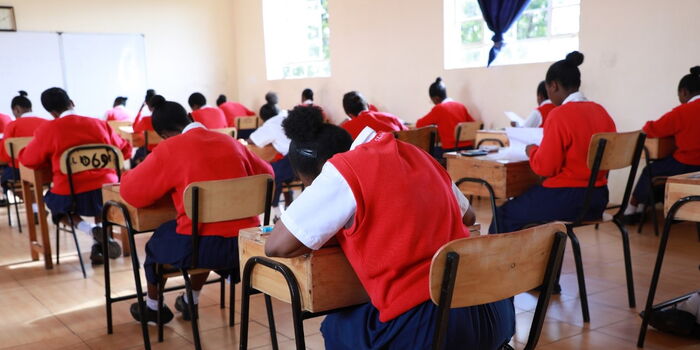Education Cabinet Secretary Julius Ogamba has confirmed that the government has disbursed capitation funds to 38,000 schools that have successfully undergone verification.
Speaking on Sunday, September 5, Ogamba said the Ministry of Education is in the final phase of verifying the remaining schools and students and expects to wrap up the process within the next 10 days.
Once completed, the rest of the institutions will receive their funds ahead of national examinations.
Ogamba made the remarks at the Kasarani Indoor Arena, where he joined hundreds of teachers marking World Teachers’ Day 2025.
He explained that the verification is meant to ensure only genuine primary, junior secondary, and secondary schools get government funding, which is crucial for uninterrupted learning.
“We are conducting a thorough verification exercise to establish the actual number of schools and learners in the basic education sector nationwide.
For this reason, we are only releasing capitation to institutions whose learners have already been confirmed,” he said.
He added that the distribution of funds to the verified schools has already taken place. The ministry now awaits the final report from the verification process, which will guide future funding decisions based on data and evidence.
“Once the comprehensive report is submitted in the next 10 days, it will influence the ministry’s planning going forward. We are doing this to prevent any gaps in funding,” Ogamba said.
The CS emphasized that knowing the real number of learners and schools is key to protecting the education budget from cuts—an issue that has previously angered teachers’ unions.
“If we have accurate data, there is no room for deductions. But when numbers are unclear, budget cuts become possible. That’s why this verification is critical,” he explained.
Ogamba’s comments come just days after Basic Education Principal Secretary Julius Bitok revealed that the ministry uncovered more than 50,000 ghost students in secondary schools.
These fictitious enrollments have cost taxpayers over Ksh1.1 billion every year, amounting to about Ksh4.4 billion over a four-year secondary education cycle.
Bitok added that once the entire verification is finalized and fake students and schools are removed from the system, the overall number of learners could drop by up to 10 percent, along with the number of institutions.
“We are anticipating a significant drop—between 5 and 10 percent—in student numbers, and a noticeable reduction in schools. I can’t give an exact figure right now, but the changes will definitely affect allocations, since funding is tied to enrollment,” the PS noted.
The verification and capitation rollout are expected to stabilize school operations in the run-up to national exams, while also sealing long-running loopholes in the education sector’s funding framework.
Join Government Official WhatsApp Channel To Stay Updated On time
https://whatsapp.com/channel/0029VaWT5gSGufImU8R0DO30


